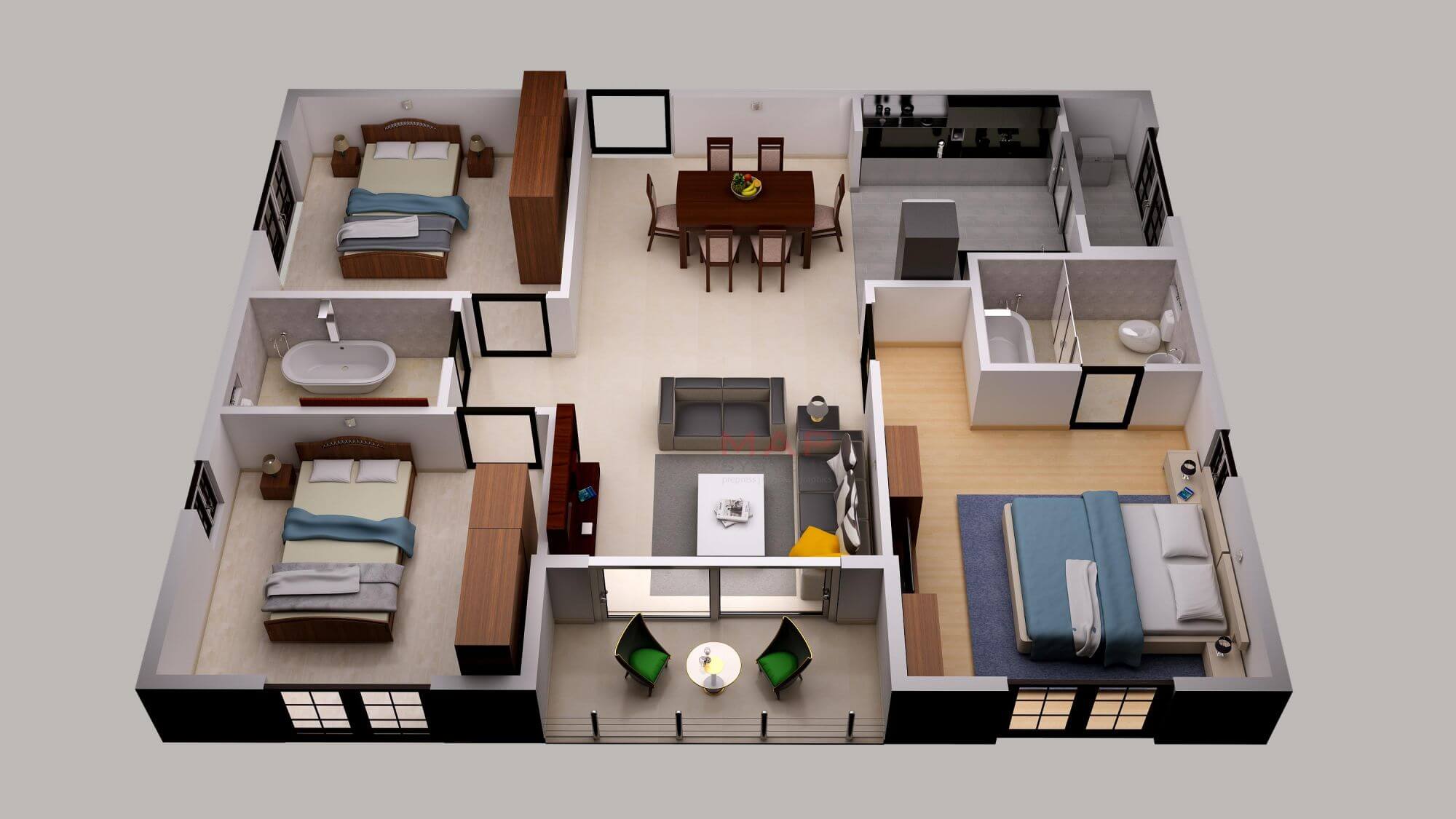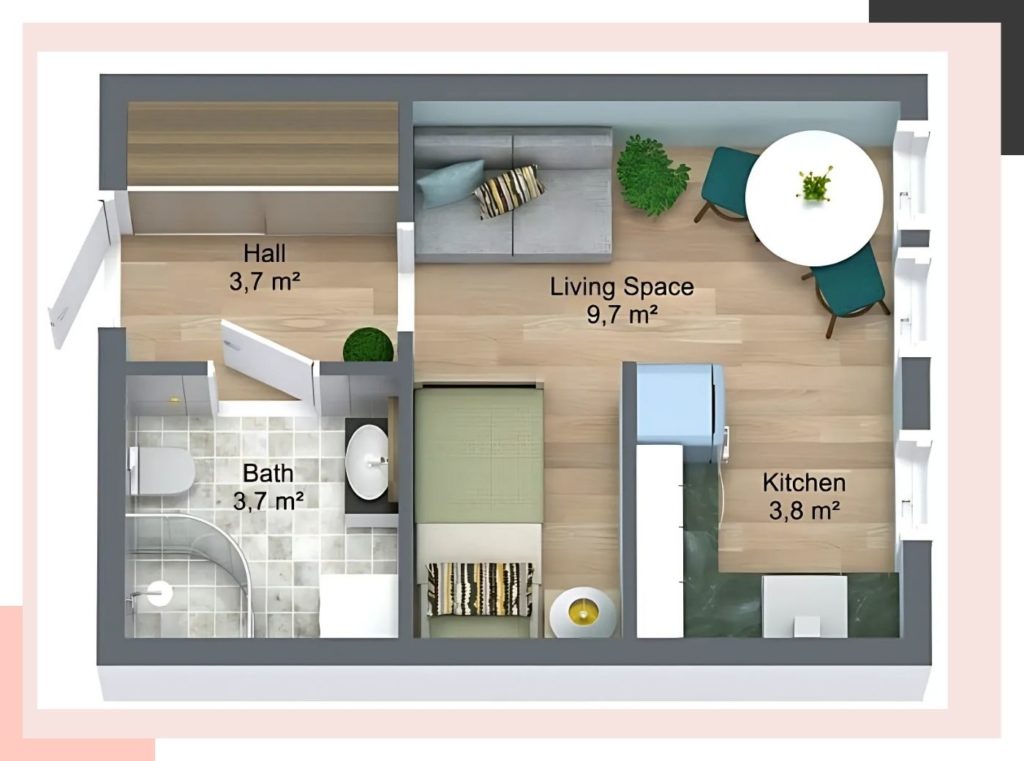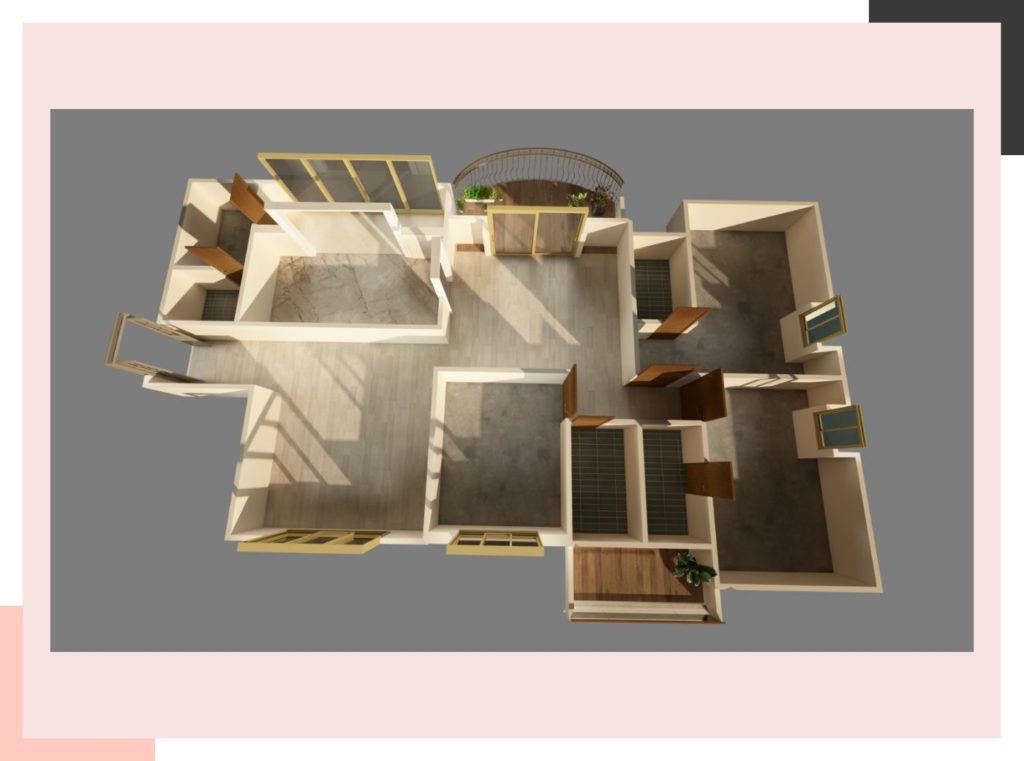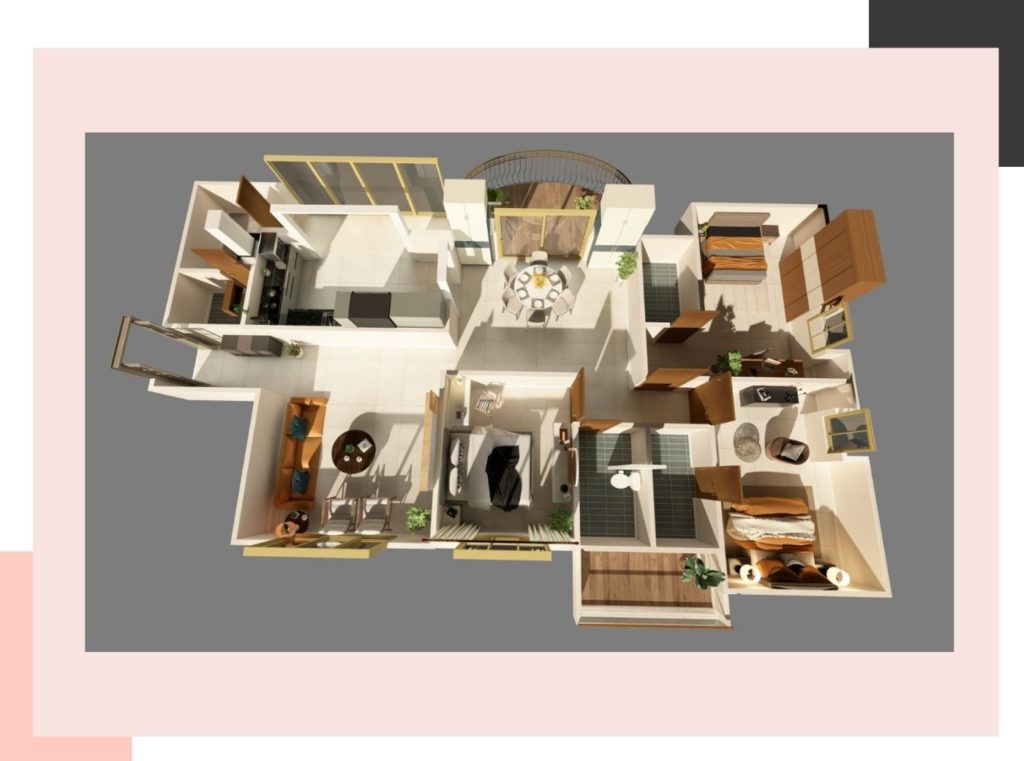Table of Contents
Introduction
Have you ever dreamed of redesigning your living space but felt overwhelmed about where to start? Whether you’re planning a cozy bedroom makeover or envisioning your dream home, drawing a floor plan is the first crucial step. It’s like creating a roadmap for your project, helping you visualize the space and communicate your ideas effectively. In this guide, we’ll walk you through the process of creating a floor plan both manually and using software. Let’s dive in!
Why Create a Floor Plan?
Before we get started, you might wonder why drawing a floor plan is essential. A floor plan helps you:
- Visualize the Layout: See how different elements fit together in your space.
- Plan Efficiently: Ensure that furniture and fixtures will fit and function as intended.
- Communicate Ideas: Share your vision with architects, contractors, or interior designers.
- Save Time and Money: Identify potential issues before they become costly mistakes.
 Creating a Floor Plan Using Software
Creating a Floor Plan Using Software
Using software to create a floor plan can simplify the process and provide precise results. Here’s how you can do it:
Step 1: Choose the Right Software
Select a user-friendly floor plan software that suits your needs. Options like Foyr Neo, SmartDraw, or SketchUp are great for beginners and professionals alike.
Step 2: Gather Your Tools and Information
- Measurements: Use a measuring tape to record the dimensions of your space, including walls, doors, windows, and fixed installations.
- Sketches: Draw rough sketches of your space to reference while working on the software.
Step 3: Set Up Your Software Workspace
- Open the Software: Launch your chosen floor plan software.
- Set the Scale: Define the scale you’ll be working with (e.g., 1/4 inch equals 1 foot).
Step 4: Draw the Walls
- Exterior Walls: Start by drawing the outer walls of your space.
- Interior Walls: Add interior walls to define different rooms and areas.
Step 5: Add Doors and Windows
- Insert Doors: Place doors in appropriate locations, ensuring they swing in the correct direction.
- Add Windows: Position windows where they are in the actual space.
Step 6: Include Architectural Features
- Fixed Installations: Add elements like fireplaces, built-in shelves, or columns.
- Stairs and Elevations: If applicable, include stairs or changes in floor elevation.
Step 7: Furnish Your Floor Plan
- Furniture Placement: Use the software’s library to add furniture and appliances.
- Customize Sizes: Adjust the dimensions to match your actual or planned furniture.
Step 8: Review and Refine
- Check Accuracy: Ensure all measurements and placements are correct.
- Make Adjustments: Tweak the layout for optimal flow and functionality.
Step 9: Save and Export
- Save Your Work: Regularly save your project to avoid losing progress.
- Export Options: Export your floor plan in formats like PDF or JPEG for sharing or printing.
Creating a Floor Plan Manually
If you prefer a hands-on approach, drawing a floor plan manually can be both satisfying and insightful. Here’s how to do it:
Step 1: Gather Your Materials
- Graph Paper: The grid lines help maintain scale.
- Pencil and Eraser: For easy corrections.
- Measuring Tape: To obtain accurate measurements.
- Ruler or Straightedge: To draw straight lines.
- Calculator: For scaling calculations.
Step 2: Measure Your Space
- Room Dimensions: Measure the length and width of each room.
- Doors and Windows: Record the size and placement of doors and windows.
- Fixtures: Note the location of fixed items like sinks, toilets, and electrical outlets.
Step 3: Choose a Scale
Decide on a scale that fits your paper size, such as:
- 1/4 inch = 1 foot
- 1 centimeter = 1 meter
Step 4: Draw the Outline
- Exterior Walls: Begin by drawing the outer perimeter of your space on graph paper.
- Interior Walls: Add interior walls, ensuring they are to scale.
 Step 5: Add Doors and Windows
Step 5: Add Doors and Windows
- Doors: Draw them as gaps in the walls with a line showing the door swing.
- Windows: Represent them with double lines or symbols.
Step 6: Include Architectural Features
- Fixtures: Mark the location of appliances, built-in furniture, and fixtures.
- Stairs and Levels: If your space has multiple levels, indicate stairs and note elevation changes.
 Step 7: Place Furniture (Optional)
Step 7: Place Furniture (Optional)
- Draw Furniture to Scale: Sketch your furniture pieces within the rooms.
- Ensure Proper Fit: Make sure there is adequate space for movement and functionality.
Step 8: Label and Dimension
- Room Names: Label each room (e.g., Kitchen, Bedroom).
- Measurements: Write down the dimensions of walls, windows, and other elements.
Step 9: Review and Adjust
- Double-Check Measurements: Ensure accuracy throughout your plan.
- Make Corrections: Adjust as necessary for clarity and precision.
After Creating Your Floor Plan
Whether you’ve created your floor plan manually or using software, the next steps are crucial:
Analyze the Layout
- Flow and Functionality: Consider how people will move through the space.
- Natural Light: Take note of window placements and how light enters the rooms.
- Furniture Arrangement: Ensure the layout accommodates your lifestyle and needs.
Seek Feedback
- Professional Input: Consult with architects or interior designers for expert advice.
- Personal Opinions: Share with family or friends for fresh perspectives.
Revise as Needed
- Adjustments: Don’t hesitate to tweak your plan based on feedback or new ideas.
- Updates: Keep your floor plan updated if changes are made during the project.
Final Checks: Ensuring Accuracy Before Submission
Reviewing Measurements and Layout for Consistency
- Accurate measurements are crucial; measure the walls, doors, and pertinent furniture to ensure the floor plan reflects the actual layout of an existing building.
- When drawing walls, use precise measurements, adjusting lengths either by dragging the walls or typing in the exact lengths directly.
- For complex room shapes, take multiple measurements for each section of wall and clearly annotate them on the plan to avoid errors.
- Use a laser measure to achieve accuracy; ensure it is level and correctly set to measure from the bottom of the device across the room.
- After completing the layout, include a title block on the floor plan, detailing the name of the house, your name, and the scale used for future reference.
Preparing Your Plan for Professional Conversion
- To prepare a floor plan for professional conversion, it is advisable to create a detailed drawing that includes the layout of all rooms and essential structural elements such as the wall structure and building core.
- Incorporating accurate measurements and including furniture, appliances, and equipment in your plan is critical for effective communication during the conversion process.
- Utilizing a grid on the drawing canvas can enhance precision, allowing for careful scaling and placement of objects in your floor plan.
- By sketching movable furniture to scale and placing them on the floor plan, it can provide a clearer vision of the design and flow of the space.
- Partnering with professionals who specialize in floor plan conversion can help turn your hand-drawn sketches into polished digital formats that meet industry standards.
Why Choose Foyr Neo for Your Floor Planning Needs
If you’re looking for a seamless and efficient way to create your floor plans, Foyr Neo offers a user-friendly platform with powerful features:
- Intuitive Interface: Easy to navigate, even for beginners.
- Comprehensive Tools: Includes a vast library of furniture and fixtures.
- 3D Visualization: See your space in 3D to better understand proportions and design.
- Collaboration Features: Share your plans with others for feedback or collaboration.
- Time-Saving: Speeds up the design process with smart tools and shortcuts.
 Conclusion
Conclusion
Drawing a floor plan is an empowering step toward bringing your interior design visions to life. Whether you prefer the tactile satisfaction of manual drawing or the precision and flexibility of software, understanding the process is key. With careful planning, attention to detail, and the right tools, you can create a floor plan that serves as a solid foundation for your project.
Ready to start designing? Give Foyr Neo a try and experience how easy and enjoyable creating a floor plan can be!
Embark on your interior design journey today! Sign up for a free trial of Foyr Neo and unlock the potential to design stunning spaces with ease and confidence.
[/vc_column_text][/vc_column][/vc_row]
FAQs
No, you don’t need professional training to draw a basic floor plan. With patience and attention to detail, anyone can create one. For complex projects, however, consulting a professional is recommended.
Absolutely! You can use your manual floor plan as a reference to create a digital version using software like Foyr Neo.
For planning purposes, measurements should be as accurate as possible. Small errors can add up and affect the overall layout.
Many floor plan software options offer free trials or affordable plans. Foyr Neo provides various pricing options to suit different needs.









 Creating a Floor Plan Using Software
Creating a Floor Plan Using Software Step 5: Add Doors and Windows
Step 5: Add Doors and Windows Step 7: Place Furniture (Optional)
Step 7: Place Furniture (Optional)